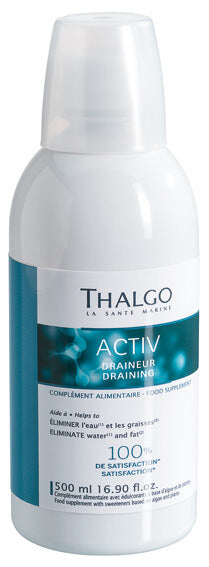SUN PROTECTION PART I – HOW TO PROTECT YOUR SKIN PROPERLY
Light, heat, energy: we need the sun to live. Thanks to the extra sunlight we generally feel more energetic and vital in summer than in the dark, cold season. But not only our well-being, but also essential bodily functions such as the immune system, the hormonal balance or the “internal clock” are directly related to the light of the sun.
The activation of vitamin D3, which is important for bone health, and the formation of the pigment melanin, which wraps around the core of our skin cells like a protective cap against UVB rays and thus ensures a tanned complexion, are also linked to solar radiation.
But unfortunately even the brightest sunshine has its downsides: If our skin is exposed to the sun frequently or for a very long time without adequate protection, it loses moisture and elasticity. The consequences are loss of elasticity, premature wrinkle formation and other skin aging signs, in the worst case, redness or sunburn. We give tips on sunscreen etc. and advise you on choosing suitable sun protection products so that you can enjoy the summer carefree.
Why sun protection is so important
Since the skin only has a limited capacity to protect itself, it is essential in summer to protect it from sun-related damage with a suitable sunscreen. Every sunburn carries the risk of long-term damage, especially in children and young people, because the genetic material of our skin cells actually has a “memory”. Even before the skin turns red, the skin cells are damaged - even minor sunburns should therefore be avoided at all costs.
In particular, the sun's UVB rays, which are also responsible for tanning the complexion, can cause significant skin damage. Scientific studies show that UVB rays are involved in over 80% of the development of skin cancer.
The latest scientific findings, however, show that not only UV rays, but also type A infrared rays, which make up around 30% of sunlight, are harmful to the skin: they penetrate deeper into the skin than UV-A or UV-B rays have a damaging effect on the cell structure, which promotes premature skin aging. Modern sun protection should therefore also contain an active complex against infrared A radiation.
The right sun protection for your skin type
There are a variety of sun protection products that protect the skin from damaging UV radiation:
- Sun cream: rich texture, particularly suitable for the face, hands and neck
- Sun milk or lotion: is easy to spread and absorbs well
- Sun spray or foam: innovative formulations make application easier and are particularly useful.a popular with children
- Sun Blocker: Sun protection product with a very high SPF (50+)
- Sun oil: easy to spread, but offers little protection as only low sun protection factors can be incorporated
- Special sun protection products for lips or hands
What is the SPF?
The sun protection factor - LSF for short (English SPF for Sun Protection Factor) - indicates by how many minutes the skin's own protection time is extended by the respective sun protection product. Depending on the phototype, the self-protection time (the time after which the skin begins to redden when in direct contact with the sun) varies.
Example:
If your skin's own protection time is 15 minutes, if you use a sun protection product with SPF 20, you can stay in the sun for a total of 300 minutes (15 x 20) a day without risking sunburn. However, if the skin is not yet used to the sun, you should subtract about a third from the time determined by the formula.
Determine your own phototype: How sensitive is my skin to the sun?
Take a look at the table. Based on the characteristics that apply to you, you can determine your skin's sensitivity to the sun and determine your phototype. The type determination helps you choose the right sun protection.
| Feature | Phototype I | Phototype II | Phototype III | Phototype IV |
| Hair color | light, blonde or reddish | blonde | brunette | dark brown, black |
| Eye color | light blue or green | blue, gray, green | gray, brown | dark brown |
| Freckles | very many | many | less | hardly |
| Skin tone untanned (inner arm) | very bright | light | medium | dark |
| Risk of sunburn | very high, gets sunburned very quickly | high, gets sunburned easily | rarely gets sunburned | almost never gets sunburned |
| Brown | hardly turns brown | browns only slightly | browns relatively quickly | browns quickly and strongly |
| Sun sensitivity | very sensitive to the sun | sun sensitive | not very sensitive to the sun | sunsensitive |
| Intrinsic protection time | approx. 5 to 10 minutes | approx. 10 to 20 min | approx. 20 to 30 min | approx. 30 to 40 minutes |
| Recommended SPF | 40 or 50+ | 25 to 40 | 25 | 10 or 20 |
Product recommendations for your photo type
If you have very sun-sensitive skin, we recommend a sun protection product with SPF 40 or 50+ such as the moisturizer from Dermalogica. It nourishes, regulates and protects the skin's texture and can be used as a moisturizing everyday product or to combat the first signs of aging. Also ideal for skin types with irregular pigmentation.
The anti-aging sun care from Maria Galland is also perfect for sun-sensitive and very sun-sensitive skin types.
Is your skin less sensitive to the sun? Then the Sun Care face & body SPF30 from Med Beauty Swiss is just right. Thanks to its rich texture, the waterproof sun care provides the skin with optimal nutrients and protects against sunburn, loss of moisture and premature skin aging.
As phototype IV, you have skin that is insensitive to the sun. Our product recommendation for you is the Age Defense Sun Lotion from THALGO. With its light, moisturizing formula, it protects the face and décolleté from photoaging of the skin caused by UV rays, counteracts pigment spots and gives a healthy tan.
How do I use sun protection correctly?
The recommended value for the use of sunscreen by skin researchers is around 2 milligrams per square centimeter of skin area.
To put it simply:





 Use 1 teaspoon of sunscreen (equivalent to about 5 g) on the face and
Use 1 teaspoon of sunscreen (equivalent to about 5 g) on the face and